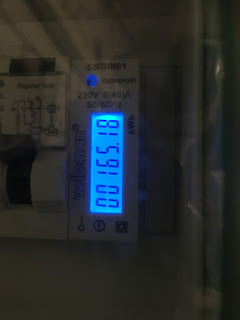Reading view
Electronic Toys and Their Influence on Us

ARRL Developing Performance Analysis Program for NTS
The National Traffic System (NTS) will soon be evaluated with new tools to help improve system performance. The ARRL is developing a web-based Performance Analysis Tool (PAT) to ultimately improve speed and accuracy of the traffic system. Additional training materials will also be developed to improve NTS performance. Once the new tools are complete, the ARRL will hold a test exercise to measure their effectiveness.
Source: ARRL NTS Letter
July 4, 2024. Happy 4th of July
Another 4th of July is upon us. Hey Sam, put the Flag right side up!

Friedrichshafen: Christian and Andrea’s Multi-Country POTA Rove
On the beach
Tech Minds: Testing an Inmarsat L-Band Helix for Offset Satellite Dishes
In his latest video, Matt from the TechMinds YouTube channel tests out an LHCP L-band helix feed designed for receiving Inmarsat satellites. Matt pairs the feed with an 85cm satellite dish, an L-band LNA, and an Airspy Mini.
The L-band helix feed comes from a small German engineering company called nolle.engineering. The feed is priced at 94.70 Euros (incl. VAT) (~$102 USD), plus shipping costs. It is a passive antenna so it needs to be combined with an LNA to be usable with a typical SDR.
In the video Matt shows that the reception with the LHCP helix + dish setup is better than expected. He also compares it to a previous test he did with a longer RHCP helix antenna also produced by nolle.engineering. The RHCP antenna is used to be used without a dish, however, as expected the SNR is less than the dish + small LHCP feed setup. Matt then shows some Inmarsat signals being decoded including STD-C and Aero voice.

HRWB 213 - Radio Rejuvenation with Dan Quigley N7HQ
In this episode we bring back our good friend Dan Quigley, N7HQ, to talk about restoring older radio equipment. Should you return an old radio to it's original state or repurpose the chassis for a more modern project with the look and feel of a classic radio of the past? We explore various approaches to restoring radio equipment including tools, test equipment and process.
Dan is the director of strategic programs at Flex Radio and brings decades of professional engineering and ham radio experience to the discussion.
Log Book of The World Back Online
Log Book of The World (LoTW) has returned to service after a lengthy outage. ARRL is asking users to refrain from uploading large amounts of QSOs for a few weeks in order to minimize the potential backlog of uploads. In addition, users are asked to remove duplicates from their logs to help further reduce server load. Planned downtime is expected through the rest of the year to further enhance the service. Users can contact LoTW-help@arrl.org for assistance.
Source: ARRL
13 Colonies update
If you remember my previous post where I commented:
“Onwards and upwards so…. Happy 4th of July to my American Friends…. I’ve already gotten 7 of the 13 Colonies station in the log and I started chasing them today.“
“Check out their website for more information.”
So it would seem that last evening I was lucky/skillful enough to get the remaining 6 colony stations in the log along with the WM2PEN Bonus Station in the log.
Last night I did hear the GB13COL Bonus Station on 20m ssb and could not break the pile up.
This morning I did hear the TM13COL Bonus on 15m cw but once again was unable to break the pile up.
So far out of the 14 contacts ( 13 colonies and 1 Bonus station) 3 contacts were made in CW and 11 were made using SSB.
Power levels are 90w for SSB and 40W for CW.
I’m (foolishly) feeling confident that before the event ends on July 7th I should be able to complete the SWEEP including the 3 bonus stations.
After all I only need 2 more…..
The last time I was able to do this was in 2022.
Once again Happy 4th of July to my Neighbors to the South
73bob
RAC Canada Day Contest-report
Well the RAC Canada Day Contest is over for another year.
As with all the RAC Contests I set certain goals for my self and for this one was no different.
The goals were as follows:
HAVE FUN- This is a must. I am a casual operator and not a “dyed in the wool” contester. The main thing is to have fun and keep it friendly… This was not an issue and I had a blast working across Canada.
TRY AND WORK CANADA COAST TO COAST TO COAST-
Well almost… I had contacts in:VE1, VE2, VE3, VE4, VE5, VE6, VE7, VE8, VE9 and VO1. East Coast to the West Coast and the North West Territory.
Unfortunately this time VO2,VY0, VY1 and VY2 escaped me.
HAVE A SCORE IN THE TOP 50% OF MY CATAGORY. Needless to say that this time its not going to happen. I made contacts on 15m, 20m and 40m and they were good contacts…. I just needed more of them.
After about 9 hours of radio stretching it out over a 24 hour period it was all over. One of the lowest scores I will not be submitting but it was still fun.
Onwards and upwards so…. Happy 4th of July to my American Friends…. I’ve already gotten 7 of the 13 Colonies station in the log and I started chasing them today.
Check out their website for more information.
.
Then it looks like its back to “Playing Pota” again ….
73bob
Musing
Modding the Dell DA-2 into a radio power supply
The Dell DA-2 is a power supply for, I don't actually know. A Dell computer of some sort I assume. They're popular for running external GPUs, and can be easily modified to supply 12v at up to 18 amps, aka 200 watts with no fan and (in theory) decent performance etc.
So, let's modify one to use as a radio power supply! (Please ignore the continuity errors, I took the photos after doing the mod and whilst putting it back together.)
To open it up you'll need a "security" bit, S2 T10, it's a 6 pointed star with a bit in the middle. The screws are all under the rubber feet.
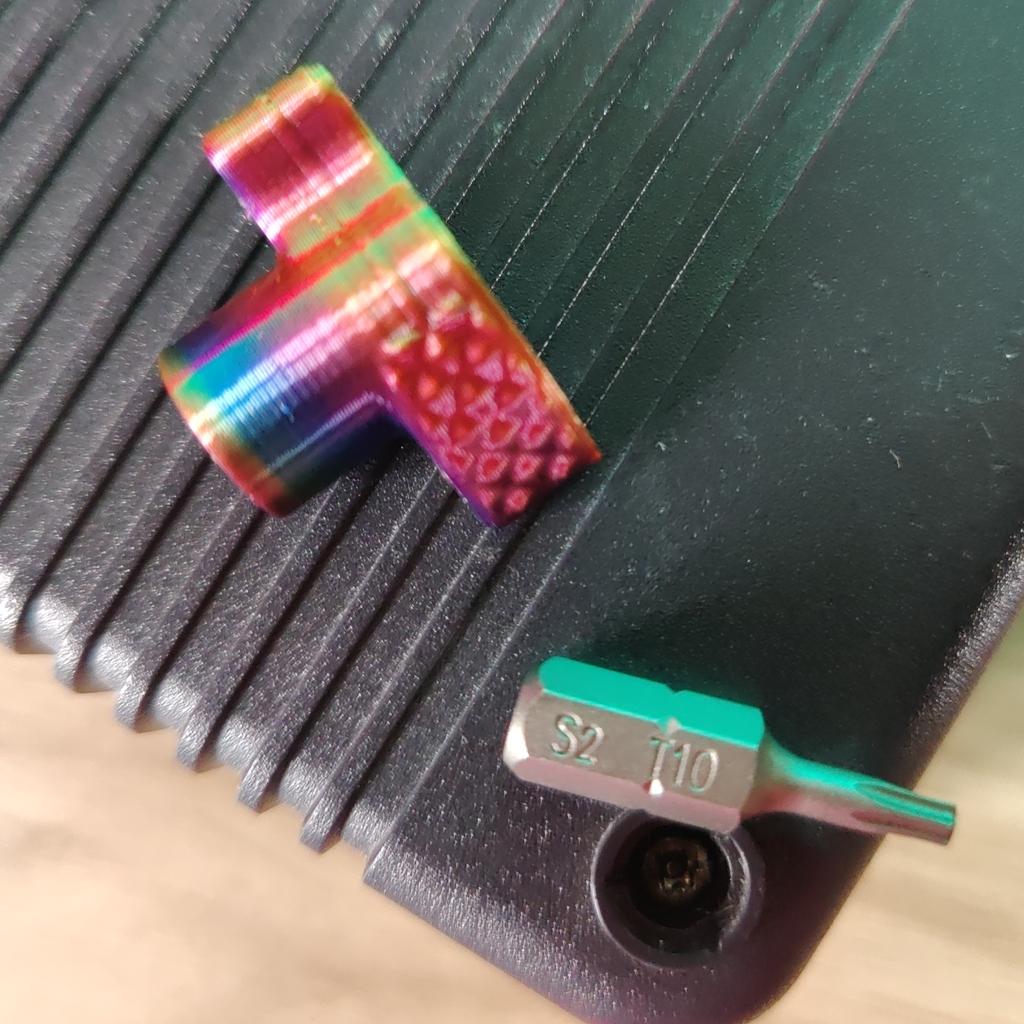
Inside the case you'll find everything wrapped up in metal which is held with tape, and shimmed into the case with two flat bits down the sides. Slide those out and the rest should come free easily.
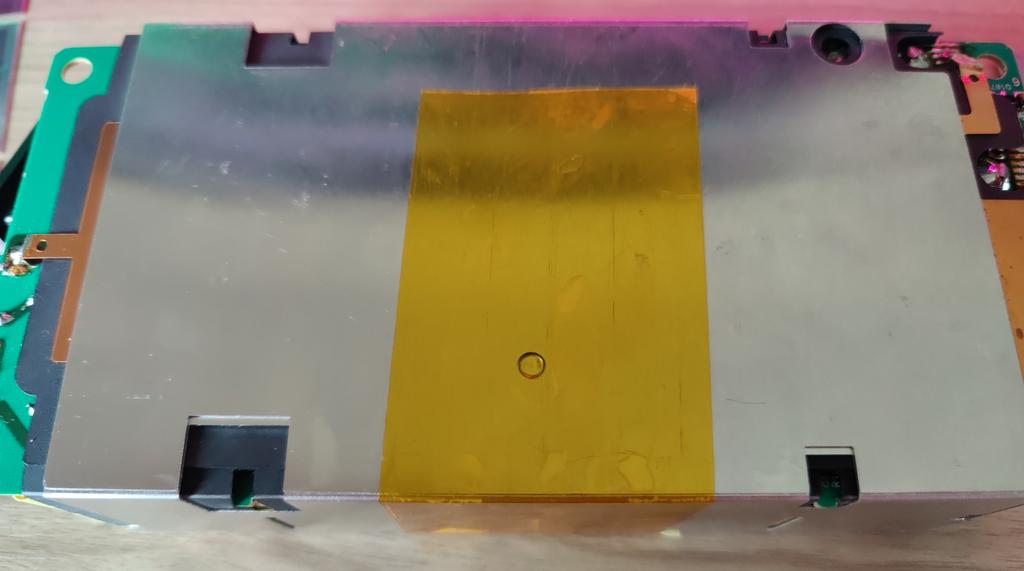
Cut the tape and you can unfold the metal and slip the thing out.
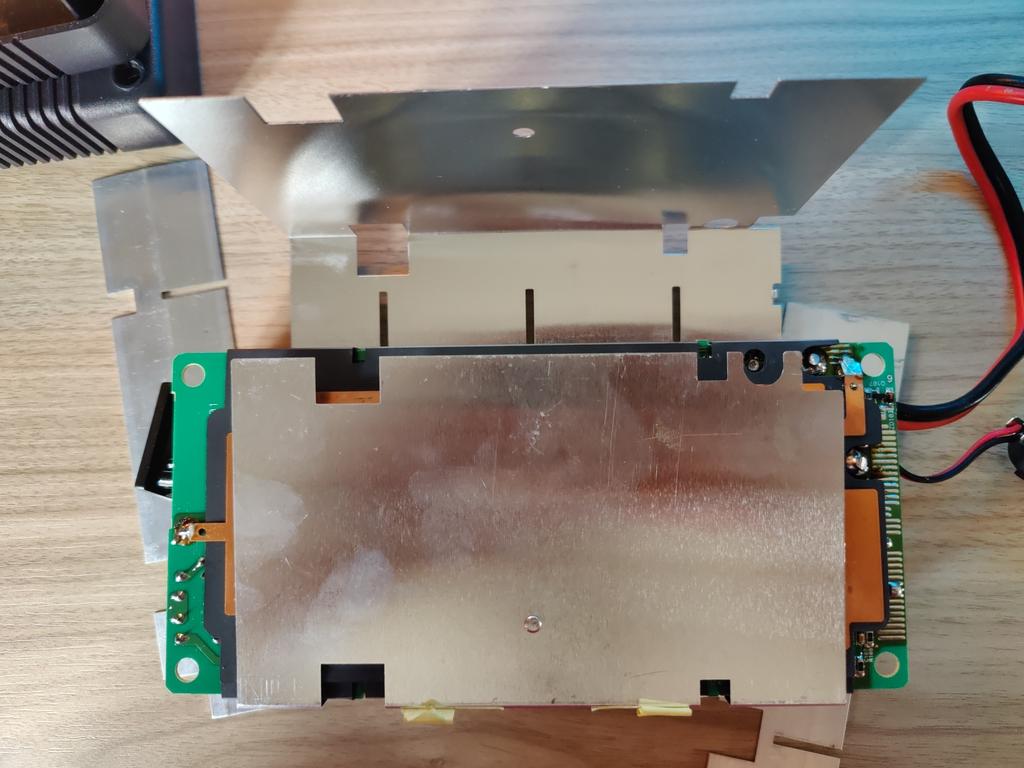
There is a big flat copper thing that connects the earth/ground/0v from one side to the other. You'll need to unsolder this to remove it.
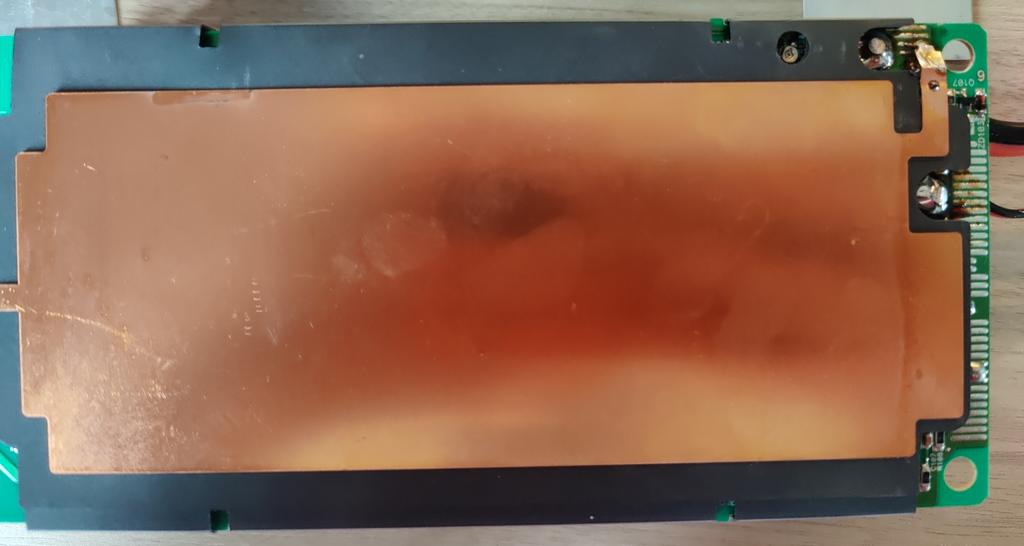
Yet more unwrapping! Unwrap the plastic thing and you'll finally see the actual circuit.
This is where you need to tin your soldering iron and make sure it's hot as there are two bundles of wires that need removing and it'll take a lot of heat. Be patient and make sure all the solder is liquid before pulling them out.
There are also two smaller wires that need disconnecting.
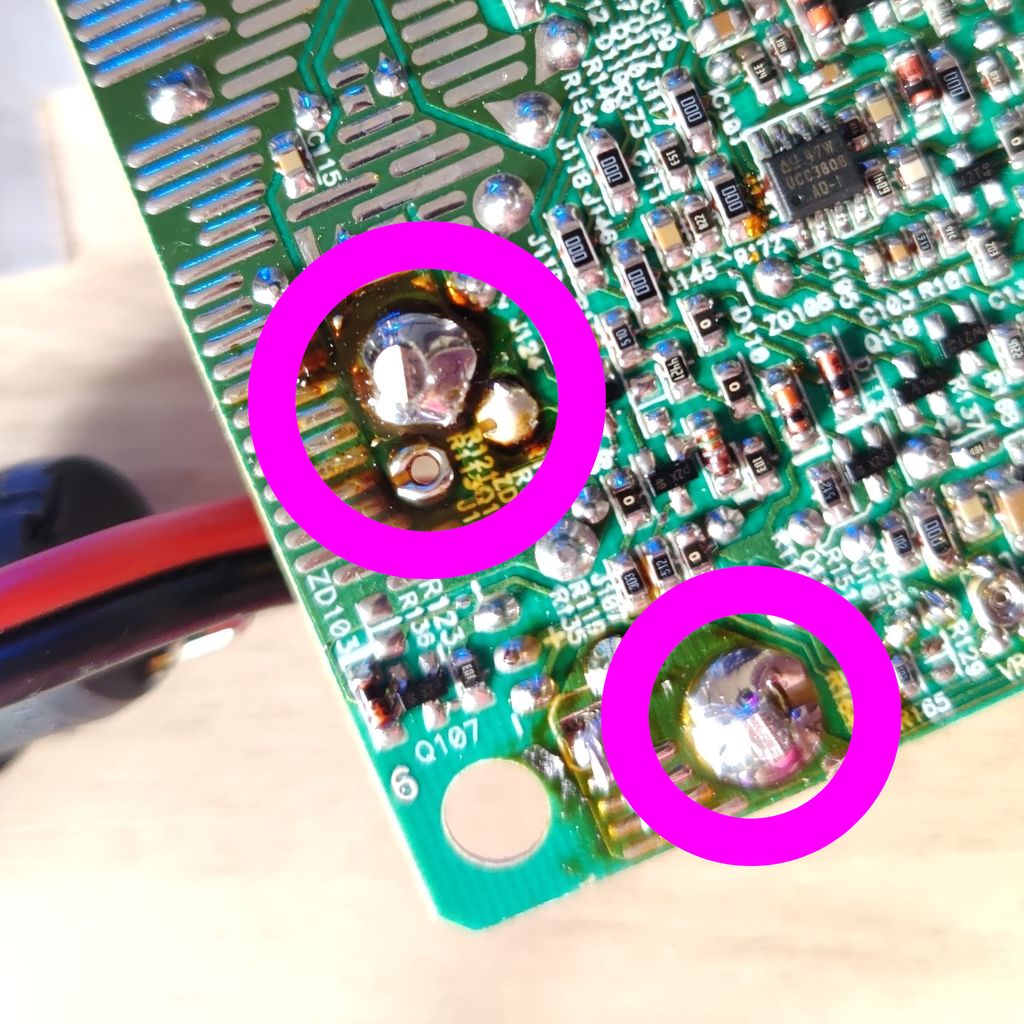
Decision time. The supply can be switched by connecting pin 5 to ground. Although not any more as we just removed that wire... If you want it to always be on you can just short the through hole marked "remote" to ground. Or you can do what I did and wire in a switch.
I've no idea what "red" is for. I didn't connect anything to it.
Time to get the soldering iron to work again and connect your +ve and -ve wires. Use something chunky enough to handle 18 amps! I used some of the cable that came with my Icom IC-706 which I'd already cut in bits and fitted Power Poles onto.
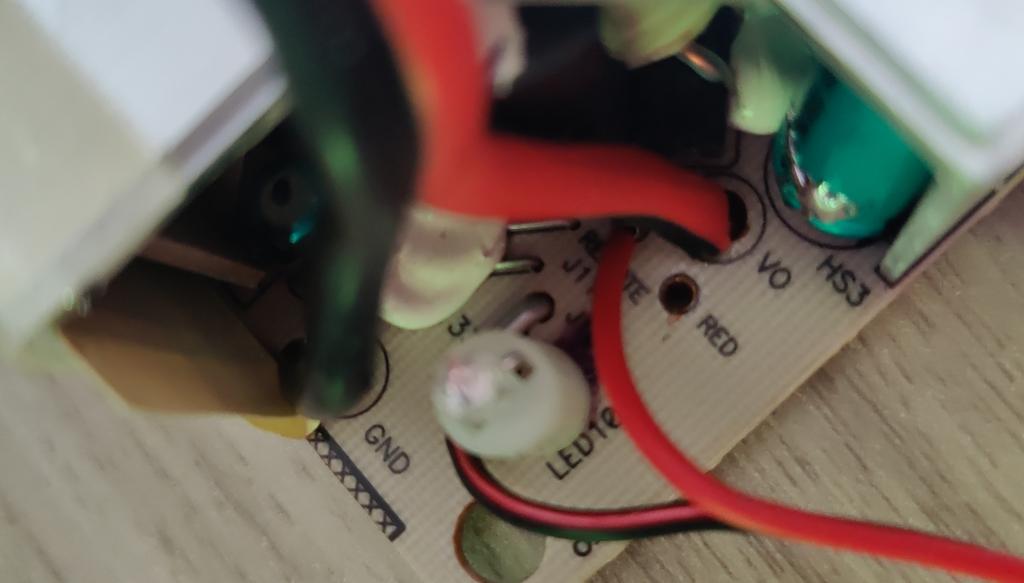
Now, put it all back together! Don't forget the copper thing. Plastic wrap, copper, metal, tape, shims down side, case, screws. Be careful you don't trap any of your new wires on the screw posts.
Reducing RFI from solar systems
Reading this very useful and detailed post from fellow blogger KA7OEI.
https://ka7oei.blogspot.com/2024/06/reducing-qrm-interference-from-renogy.html
I extended my solar energy production with 5 extra solarpanels a while ago. It really was a bargain getting these as I bought the 260Wp panels at a cost of €50 (€10 per panel) from a colleague. The inverter was searched for on the dutch internet marketplace and I bought one for another €50. Most of the costs were the mounting rails, wiring and the #31 ferrite to make shure no RFI would reach my antennas. The last items were an additional €300.
The open line of the inverted-V doublet is just about 1,5 meter above the solarpanels. I even got a quarter wave CB antenna near the panels to listen to some chats on CB when in the garage. I really did take all precautions to make shure I would not have any RF coming from the inverter or the panels. On the pic at the right you see that I used big #31 FT240 ferrite rings in both AC and DC lines. The earth wire is fitted with a big #31 snap-on ferrite. DC wires are mostly fitted in earthed Alu tubes were possible. Everything is earthed to a central earth point, the tubes, the mounting frames and the inverter.
At the left a pic from the Alu tubing used. Yes, it is made of old antenna left overs. I always use what I have at hand. I seldom throw away scrap Alu tubing. Over the years I collected some ;-).For Dutch readers it could be interesting to read the Dutch Telecom recommendation:
https://www.rdi.nl/onderwerpen/tips/voorkom-storingen-door-zonnepanelen
Well, I don't have any RFI from my own solarsystems. I see QRM in the waterfall of my IC-7300 from my neighbours solarsystem on 50MHz. Just to be shure it isn't my own I checked when I switch my own systems off. Of course there was no change, the QRM stays there and is not from my property for shure. Luckily the QRM is only there when I turn my beam over their house.

New ARRL Section Managers
Nominations for 2024 ARRL Section Managers have been made. All nominees listed ran unopposed and returned their nomination forms by the June 7, 2024, deadline. They have been notified by mail and elected for new terms beginning October 1, 2024.
Connecticut:
Douglas Sharafanowich, WA1SFH (new)
Idaho:
Dan Marler, K7REX
Minnesota:
Bill Mitchell, AEØEENorth Dakota:
Ralph Fettig, NØRDFOhio:
Thomas Sly,...
LOGGI Log-Periodic Yagi Hybrid Antenna
ARRL Logbook of The World Returns to Service
ARRL Logbook of The World® (LoTW®) returned to service July 1, 2024. It had been offline as part of a systems service disruption.
As work progressed on the network, some users encountered LoTW opening briefly during which some 6600 logs were uploaded. The logs were not processed until this weekend as we tested that the interfaces to LoTW were functioning properly.
We are taking steps to help mana...
Chameleon PRV Heavy POTA Kit Review
A great add on to the MPAS kit or just as a stand alone.
I do find the counterpoise wires o be too thin and prone to breakage and want Chameleon to go back to the #16 Kevlar wire they are known for
Also the short length of the whip on20m is a bit finicky due to the ground I had but a grassy ground is usually pretty good but the radiation resistance was kind of low.
The kit adds items I dont have in my MPAS kit making for a well rounded deployment kit similar to this:
CHA MULTI CONFIGURATION COIL
The core component of the CHA PRV antenna, known as the CHA MCC (Multi Configuration Coil), serves as its foundation. The CHA PRV antenna is skillfully engineered and built to withstand rugged conditions, making it particularly suited for demanding portable applications such as Parks On the Air (POTA), Summits On the Air (SOTA), and other outdoor radio pursuits that necessitate an antenna that’s both efficient and easily transportable. This antenna is also an excellent choice for radio enthusiasts who reside in environments like RVs, apartments, or condos, where space is limited to a small balcony or patio.
Chameleon Antenna has designed the CHA PRV to perfectly complement the latest generation of compact multi-band/multi-mode QRP transceivers, including models like the Icom IC-705, Xiegu G90 or X6100, LAB 599 TX500, and the Yaesu FT-817/818.
SPECS
Power Handling: 500W SSB 300W CW 200W DATA
Materials: Anodize Aluminum OD Green, White Delrin, Stainless Steel and Silver Plated Copper wire
Bands Coverage: 2M to 40M with the SS58
DIMENSIONS
Diameter = 1 1/4″
Length Collapsed = 12 1/2″
Length Extended = 19 1/2″
Weight = 0.94 lb.
CHA MCC
1 X CHA MULTICONFIGURATION COIL
CHA PRV SOTA (LIGHT KIT)
1 X CHA MCC (Coil)
1 X CHA SS58
1 X CHA SPIKE MOUNT
1 X CHA PUCK HUB
4 X CHA TENT STAKES
4 X CHA B-RADIAL (12’6″)
4 X CHA WINDERS
1 X CHA WW RADIAL (34′)
1 X CHA TRIPOD ADAPTOR
1 X CHA 12′ COAX w/ integrated RFI Choke
CHA PRV POTA (HEAVY KIT)
1 X CHA MCC (Coil)
1 X CHA SS58
1 X CHA SPIKE MOUNT
1 X CHA PUCK HUB
4 X CHA TENT STAKES
4 X CHA B-RADIAL (12’6″)
4 X CHA WINDERS
1 X CHA WW RADIAL (34′)
1 X CHA TRIPOD ADAPTOR
1 X CHA EXTENDER12
1 X CHA UCM
1 X CHA 12′ COAX w/ integrated RFI Choke

















